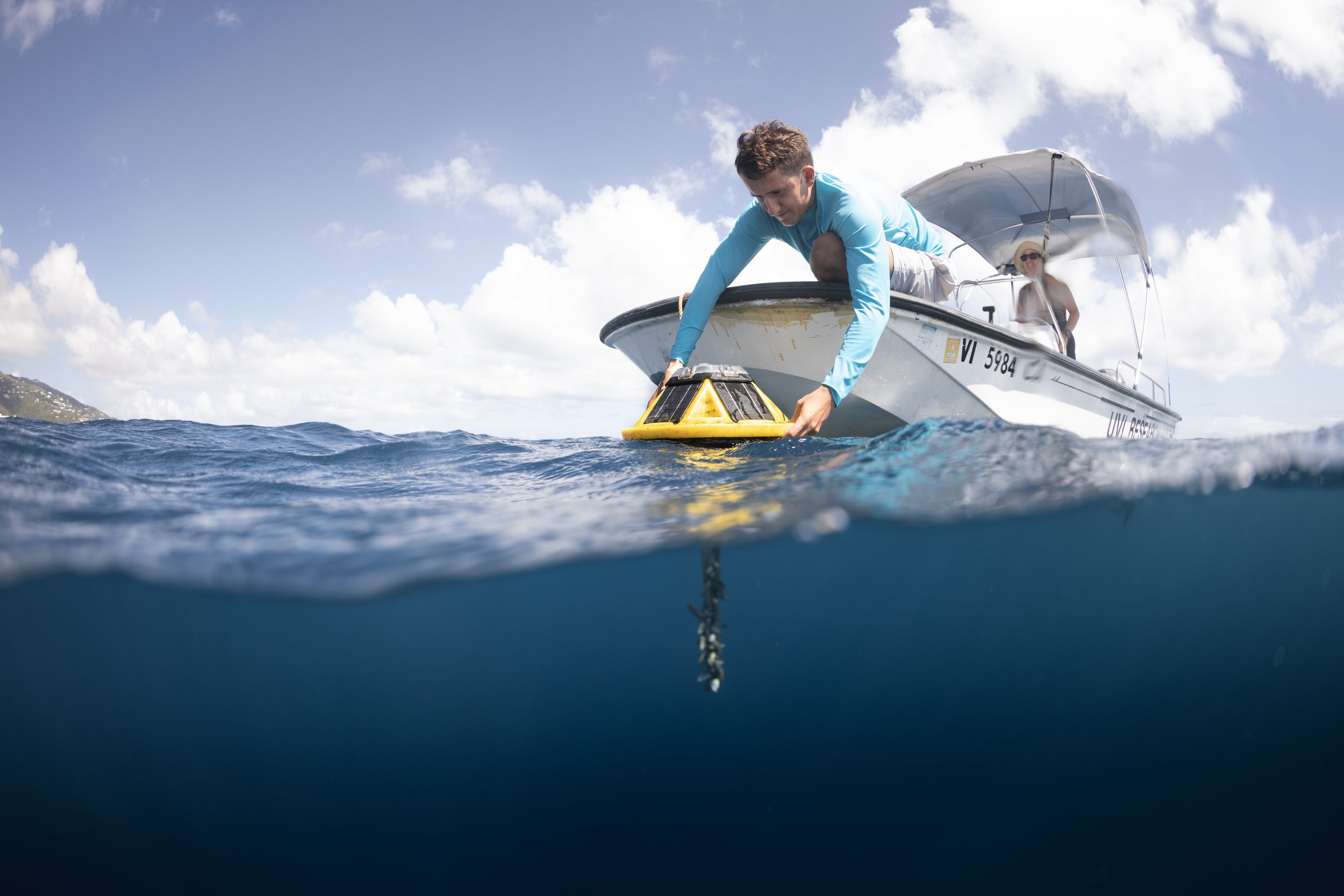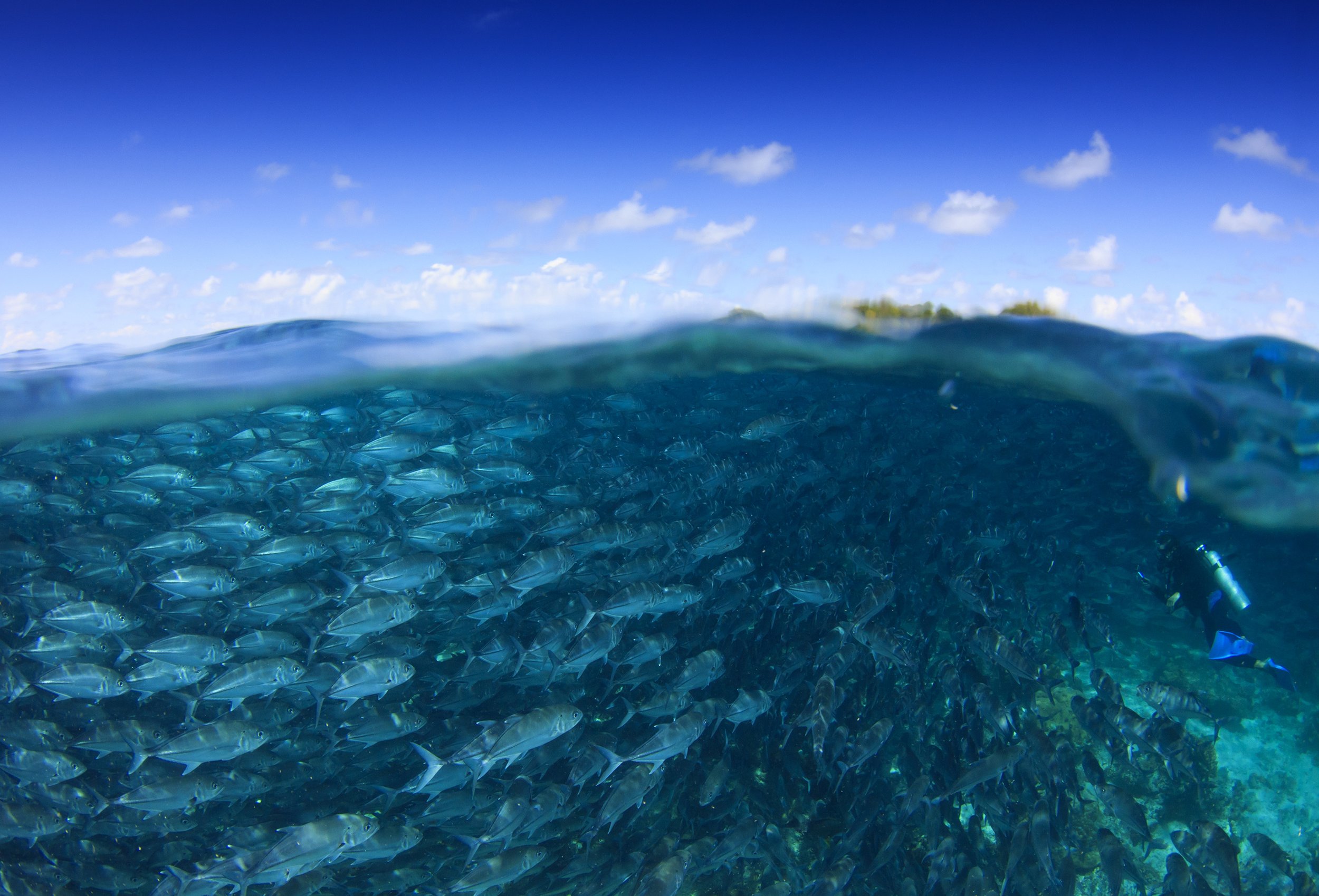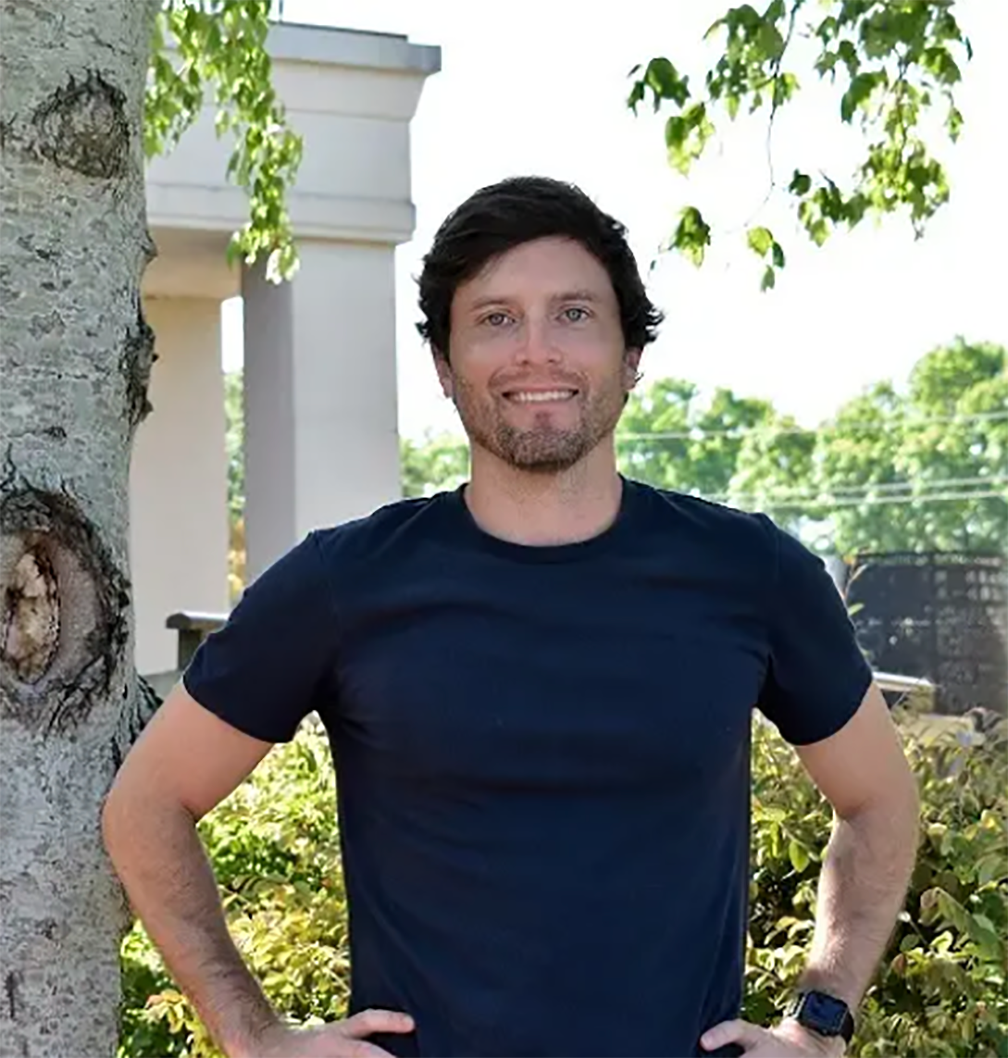Section Styles border
Oceanography
Oceanographic research informs and supports the marine science-related research efforts of the R2R project.
Understanding variations in oceanographic conditions can help predict the what, when and how certain factors influence coral reef ecosystem resilience. The Oceanographic Research Team focuses on understanding the conditions that drive connectivity patterns related to increased biodiversity at more resilient coral reefs. In support of the Fish Ecology research arm of R2R, we aim to discover how oceanographic, environmental, and terrestrial factors influence the reproductive rates of the yellowtail parrotfish (Sparisoma rubripinne) on algal turf versus macroalgal dominated nearshore reef sites.
CONTENT LINKS
Connecting Research Areas / Methodology / Additional Reading / Dr. Tyler Smith / Project Team
Connecting Research Areas
Oceanography describes the physical and biological processes that affect the properties of the ocean, such as temperature, waves, currents, and chemistry. As such, oceanographic processes affect nearly all aspects of R2R, meaning that research outputs from the oceanographic research focus are vital for the project as a whole
Wave rider buoys record the wave climate and other ocean properties around St. Thomas, providing data to validate models and link to biological research. Photo: Dan Mele
An airplane soars just above wave rider bouys installed at Brewers Bay, St. Thomas. Photo: Dan Mele
Research Goals
This area is focused on the broader goal of understanding how oceanographic variability impacts the forces that shape coral reef resilience in the USVI. Our goals are:
Develop a high-resolution ocean model for the US Caribbean that can be used to describe processes affecting all aspects of marine life.
Develop connectivity matrices to understand process of disease particle dispersion (disease section), coral larvae connectivity (marine resilience), and reef diversity (marine resilience).
Develop state of the art facilities for collecting remote and in situ data on ocean properties.
We Are Building Upon History And Partnerships
This work builds on previous VI-EPSCoR Mare Nostrum research which focused on understanding the long–term oceanographic conditions impacting coral reef Dynamics, Disease, & Demographics. As part of this effort, researchers within this area have helped to develop and manage a time-series of important oceanographic variables at locations around the territory. A regional ocean model was also developed and will be used to predict ocean conditions and connectivity pathways for larval fish and egg transport between R2R research sites.
This team will work closely with researchers in the Fish Ecology area to aid in understanding how oceanographic conditions affect differences in spawning behavior at spawning aggregation sites in nearshore coral reefs which are experiencing differing levels of degradation or recovery. We will also partner with researchers in the Coral Reef Resilience team to use the US Caribbean regional ocean model developed under VI EPSCoR: Mare Nostrum, to identify coral and fish larval connectivity patterns, and studying how these affect biodiversity on coral reefs in the region.

“We are currently in a period where the earth is experiencing impacts of global climate change. Understanding how the complex mosaic of nearshore marine ecosystems in the Virgin Islands responds to or is impacted by these changes is vital to our social, economic, and ecological well being.”
–Dr. Sennai Habtes
Methodology
The US Caribbean Regional Ocean Model describes key oceanographic properties in a high-resolution framework.
Dr. Sonaljit Mukherjee developed the US Caribbean Regional Ocean Model to provide a central framework that R2R researchers can use to understand physical properties affecting plants, animals, and microbes in their areas of expertise. Photo by Dan Mele
Under R2R, the oceanographic research team is focused into two tracts of research:
Understanding the influence of oceanographic variables like temperature, salinity, productivity, turbidity, salinity, and current velocity and direction on the forces affecting both spawning behavior and coral reef resilience, and
Using a coastal ocean model to identify larval fish and coral dispersal and settlement pathways we will see how these affect the resilience of nearshore coral reefs in the territory.
This work will be a mix of field based monitoring using in-situ (remaining in place) oceanographic instruments and shipboard surveys to collect data on oceanographic conditions and recently spawned parrotfish eggs, and computer modeling to study connectivity pathways. The connectivity research which will use US Caribbean Regional Ocean Model (USCROMS; seen above) developed by the oceanographic research team and led by Dr. Sonaljit Mukherjee. The USCROMS will allow the team to study passive particle transport, like larvae, in the coastal ocean around the USVI.
Additional Reading

Section Styles background gallery-block-hover
Tyler Smith, Ph.D.
Co-PI and Project Lead
I am a coral reef ecologist interested in the dynamics of coral reef populations, physical and anthropogenic forcing of ecological systems, and human health aspects of coral ecology. I’m a researcher, teacher and student mentor at the University of the Virgin Islands and research coordinator for the US Virgin Islands Coral Reef Monitoring Program.
My current research focuses on the impacts of natural and man-made disturbances on coral reefs, the ecology of deeper coral ecosystems that form below 30m of water depth, reef refugia, and ecological aspects of Ciguatera Fish Poisoning.
Meet the team
Project support
-

Daniel Holstein
Louisiana State University
-

Doug Wilson
UVI Center for Marine and Environmental Studies
-

Miguel Canals
University of Puerto Rico, Mayaguez










